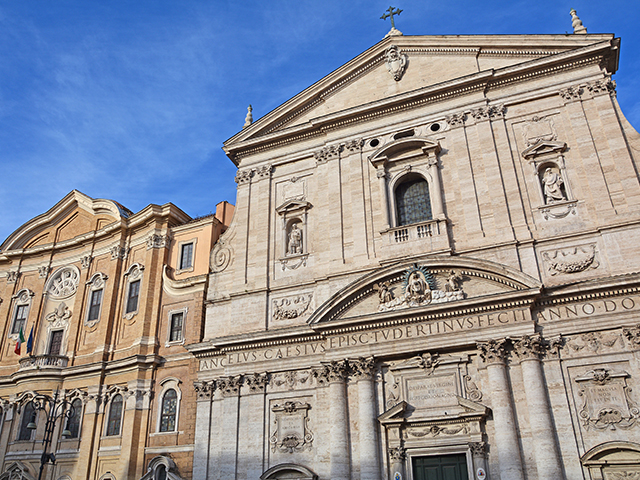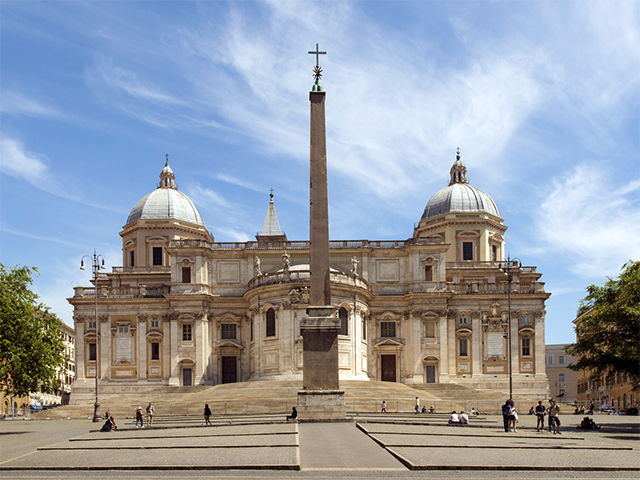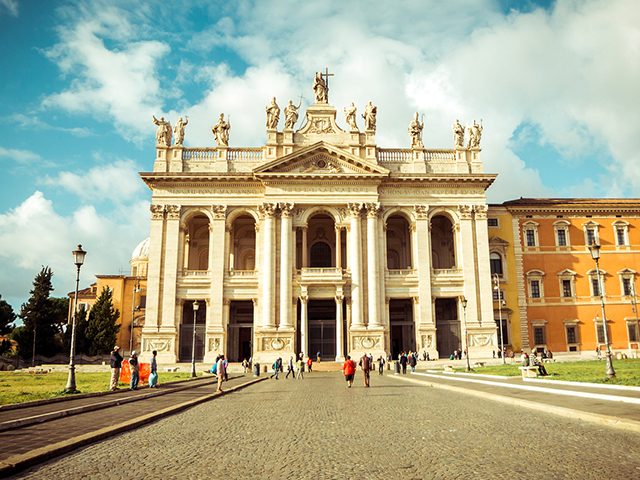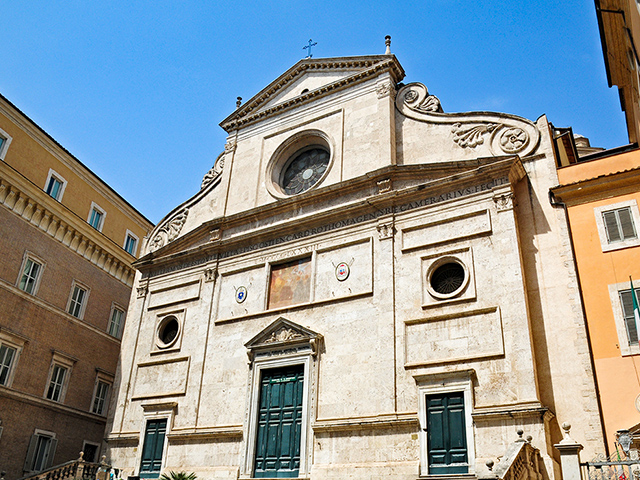The Basilica of Santa Maria del Popolo in Rome
Visiting the Basilica of Santa Maria del Popolo in Rome: opening hours and what to see; Raphael and the Chigi Chapel; Caravaggio and the Cerasi ChapelAmong the most beautiful churches in the city center of Rome, a place of honour is for the Basilica of Santa Maria del Popolo, which, in addition to lending its name to the square where it is placed, houses many priceless artworks by Caravaggio, Raphael, Annibale Caracci, Bramante, Bernini, Pinturicchio and other great artists who have contributed to make this church unique.
Being one of the most relevant buildings of the Roman Renaissance, the Basilica of Santa Maria del Popolo is an absolute must for all art passionates and not only.

The Basilica of Santa Maria del Popolo in Rome - Photo by Claudio Avanzini
From legend to history
Legend has it that where today stands the Church, a nut tree (populus in Latin) had its roots deep and had grown over the tomb of Emperor Neron. According to legend, every night the spirits conjured by the skeleton of the emperor appeared to terrorize the popolation.
Pope Pasqual II, after the Virgin Mary appeared in his dreams asking him to build a temple in her honour, decided to cut down the haunted tree to build a small church devoted to Virgin Mary, listening to the Romans' requests to exorcize the area.
Truth be told, putting the legend aside, the church was build at the Roman people expenses (hence the name) over the tombs of the Domizi Enobarbi, where emperor Neron was buried, as a way of thanking him for the conquest of Jerusalem after the first Crusade.
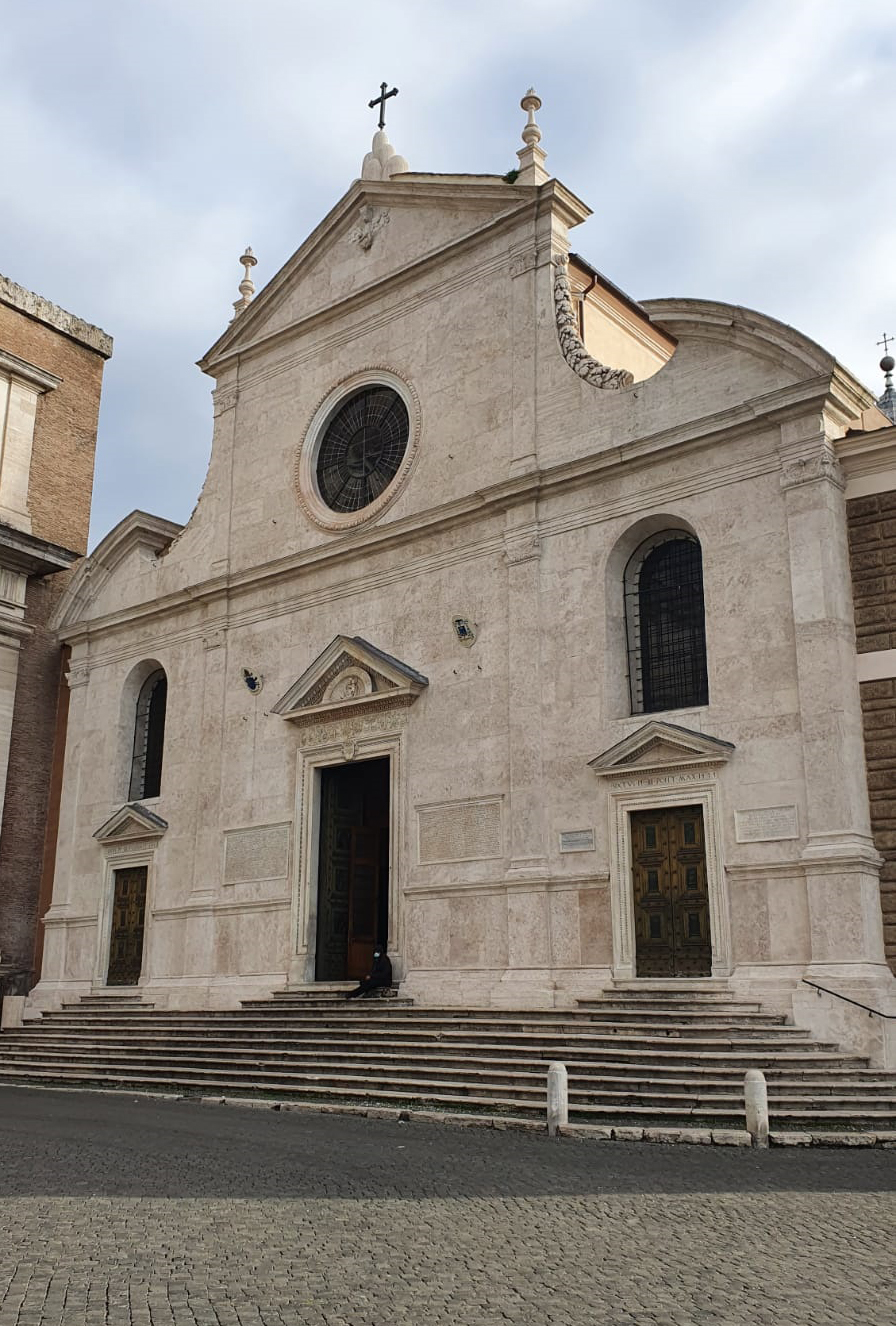
Outer façade of the Basilica of Santa Maria del Popolo
The Church
Rebuilt in the 15th century by Pope Sixtus IV and modified in the 17th century, the Basilica of Santa Maria del Popolo is related to names of great artists such as Bramante, Sansovino, Pinturicchio, Mino Da Fiesole, Raphael, Bernini and Caravaggio.
The interior of the church, with three aisles in a Latin Cross plan with groin vaults, shows the plain and proporcionate outline of the Cistercensi churches.
On the floor are many sepulcral slabs dating back to the Middle Ages and the Renaissance, while the chapels are full of funeral monuments and works of art.
Some of the most important works are, beyond doubt, the Cerasi Chapel and the Chigi Chapel which preserve important works by Raphael, Caracci and, obviously, by Michelangelo Merisi, better known as Caravaggio.
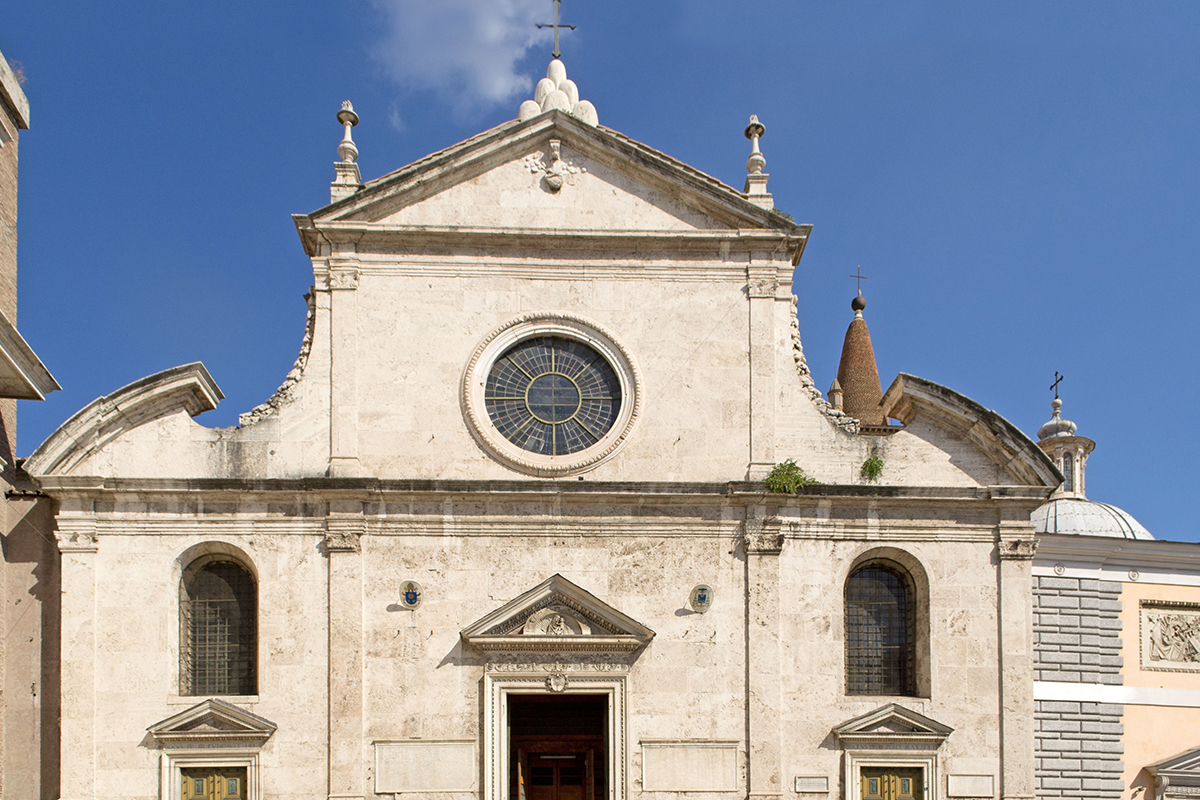
Outer façade of the Basilica of Santa Maria del Popolo
Caravaggio and the Cerasi Chapel
At the interior of the Cerasi Chapel are two incredible masterpieces by Caravaggio, Crucifixion of St. Peter and Conversion on the Way to Damascus. The altarpiece, on the other hand, representing the Assumption of the Virgin was made by Annibale Caracci.
The paintings, commissioned to Caravaggio in September, 1600 by cardinal Tiberio Cerasi, at that time treasurer of Pope Clemens VIII, have an extraordinary expressive strenght and introduce a series of innovative stylistic solutions.
Caravaggio enhances the pictorical description of the matter and light. But, especially, what surprises the most is the humanity of the characters represented, not only the humainity of the saints: there is no heroism or trasfiguration, but a life scene described with a tragical realism.
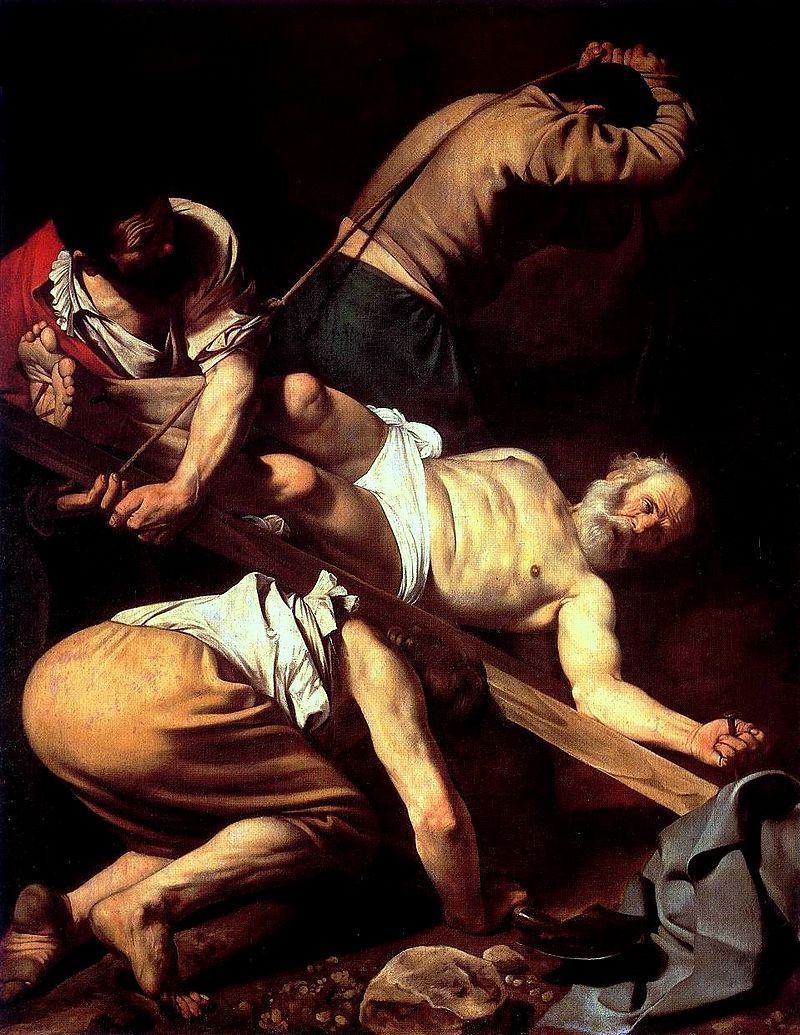
Caravaggio: Crucifixion of St. Peter and Conversion on the Way to Damascus in the Cerasi Chapel
Raphael and the Chigi Chapel
The Chigi Chapel is an authentic treasure trove!
Raffaello Sanzio, under commission by banker Agostino Chigi, designed the architecture, made the cardboard for the mosaics of the dome (made by Luigi Pace in 1516), designed the tombs in a pyramid shape for Chigi and his brother Sigismondo (made then by Lorenzetto, Raffaello da Montelupo and Bernini) and designed also the statue of Jonah going out of whale (made as well by Lorenzetto).
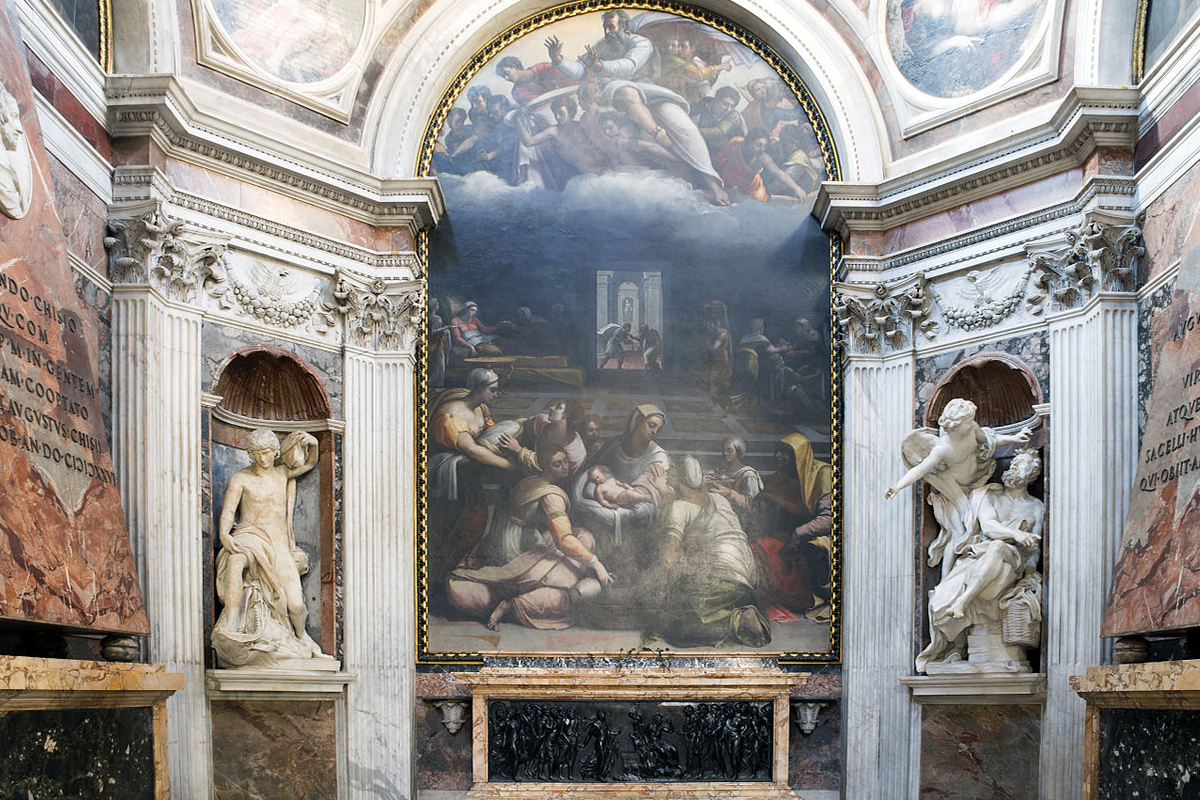
Chigi Chapel and Raphael - Wikipedia - CC BY-SA 4.0 Photo by Livioandronico2013
The two sculptures of Habakkuk and the Angel and Daniel and the Lion are work by Gianlorenzo Bernini. Also the mosaic on the floor representing the Winged Death was made by Bernini.
The Latin phrase Mors aD CaeLos, so dear to Dan Brown's followers, is nothing but a Barroque trick to indicate the Holy Year when a work was made, that is 1650 in Latin MDCL.
Finally, the altarpiece of the chapel was made by Sebastiano del Piombo and Salviati.
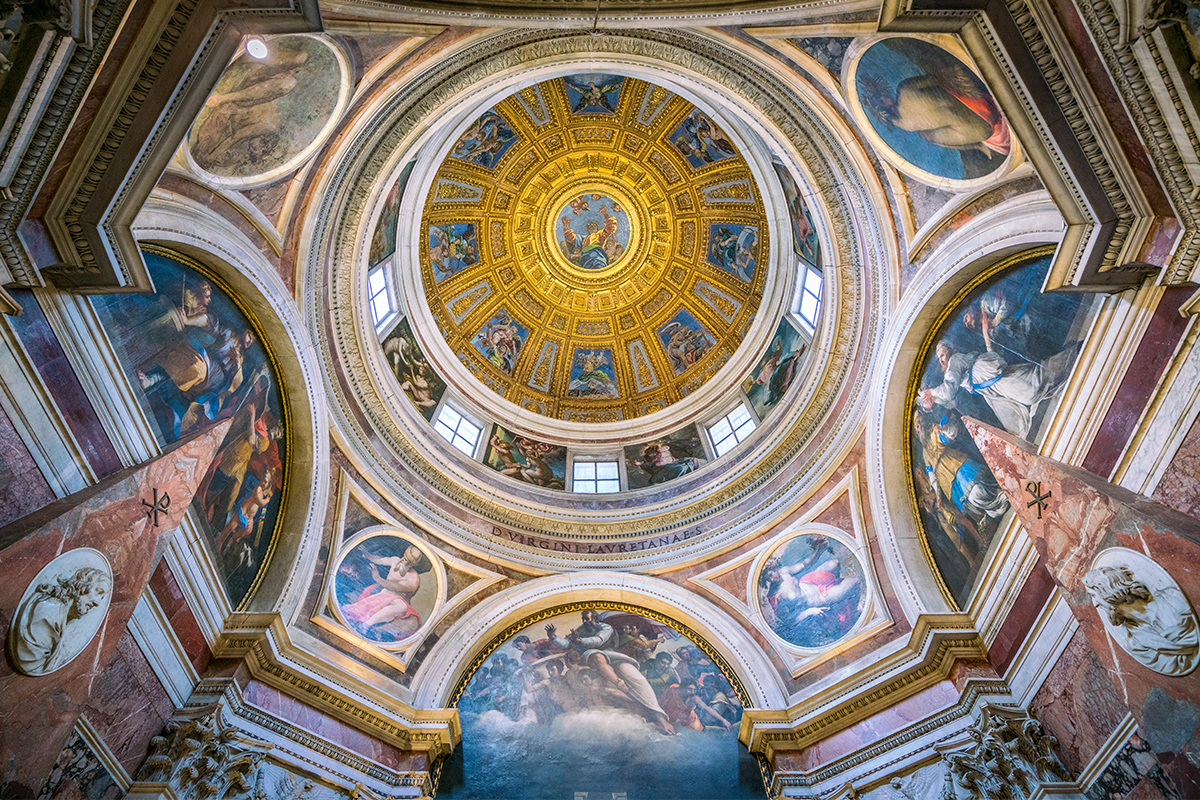
Chigi Chapel - Chapel designed by Raphael
For further information on visiting hours and days to visit the Basilica of Santa Maria del Popolo we invite you to refer to the information box at the bottom of the article.
Useful information
Basilica of Santa Maria del Popolo
- HOW TO GET THERE
From the Port of Civitavecchia: to get to Piazza del Popolo go to Civitavecchia Train Station and get on the first train bound for Rome. AFter about on-hour journey, get off at Termini Station and take the subway (line A) towards Battistini for 4 stops. Get off at Flaminio - Piazza del Popolo and you'll get there shortly.
From Rome: if you are close to a metro station, your reference shall always be the line A stop Flaminio - Piazza del Popolo. From Roma Tiburtina Station, otherwise, you can take bus 490 (CORNELIA - MA) for 17 stops and get off at Piazzale Flaminio.From Roma Ostiense Station (Piramide) run only the subway lines B and B1. So you can get on the first train towards Rebibbia/Conca d'Oro (Jonio from 30th April 2015) and get off at Termini. From there, take line A towards Battistini and get off after 4 stops until getting to Flaminio. You might rather get the bus outside Piramide metro station (Ostiense) in Piazzale dei Partigiani, line 30 (CLODIO) for 7 stops takes you to the stop ZANARDELLI. From there, take the 628 (VOLPI/FARNESINA) and after 3 stops, get off at PASSEGGIATA RIPETTA. 300 further meters by walk and you'll be there.*For train timetables refer to Trenitalia.*For further information about bus timetables or routes based on where you are, refer to ATAC.- TIMETABLES
Every day: 7:30 - 12:30 e 16:00 - 19:00
Friday and Saturday: 7:30 - 19:00Mass TimesWorking days: ore 8:00 - 10:00 - 18:30
Holydays: ore 8:00 - 10:00 - 11:00 - 12:00 - 13:00 e 18:30*Times are subject to change. We recommend to check them contacting directly with the church.- PRICES
Free admission



 PORT MOBILITY CIVITAVECCHIA
PORT MOBILITY CIVITAVECCHIA









